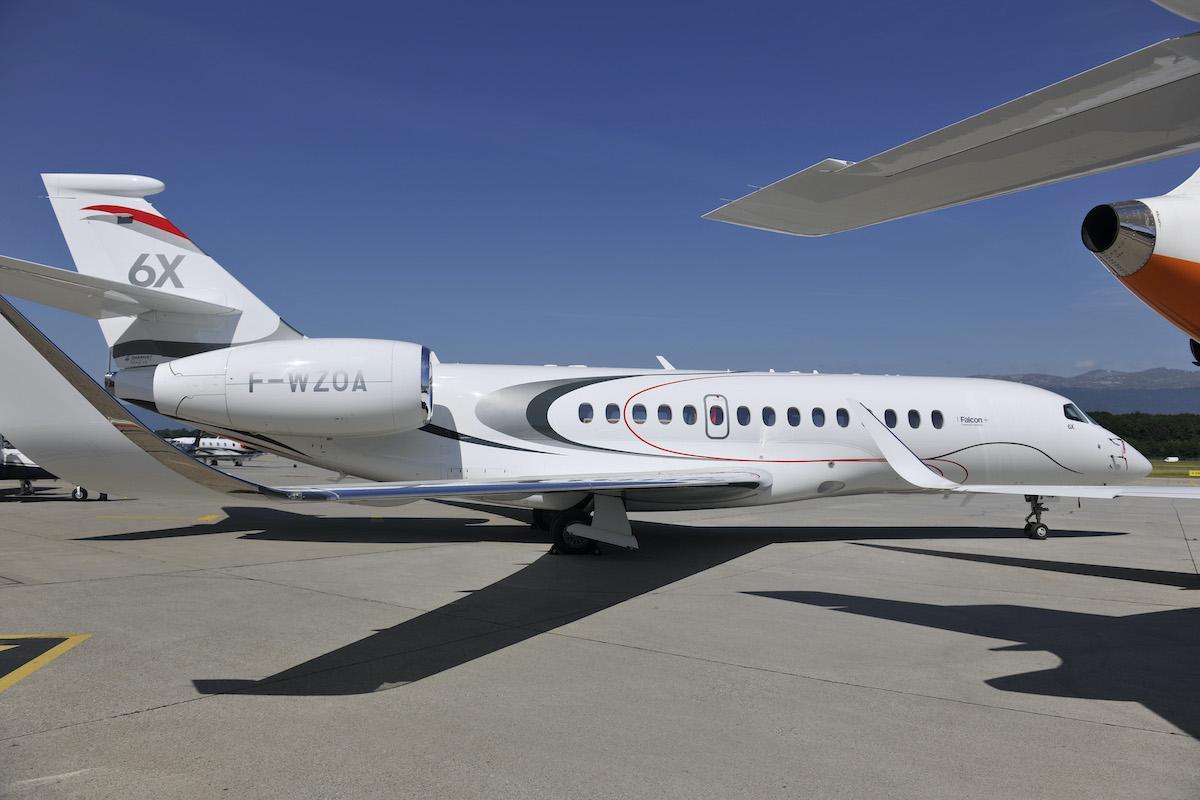
ORLANDO—Honeywell Aerospace’s 31st annual 10-year forecast projects deliveries of 8,500 business jets valued at $274 billion over the next 10 years, with deliveries projected to rise 17% in 2023 compared to 2022. It expects deliveries to return to 2019 delivery levels by 2023, much earlier than expected.
The company released the forecast Oct. 16 during a press conference in Orlando before the opening of the NBAA Business Aviation Convention & Exhibition (NBAA-BACE).
This year’s 2023-32 forecast is up 15% in deliveries compared to the 10-year-forecast released a year ago. New jet deliveries during the 2023-32 period are projected to grow at a 2% average annual rate, in line with expected worldwide long-term economic growth, it says.
“The business aviation industry is greatly benefitting from a wave of first-time users and buyers due in part to changing habits brought on by the COVID-19 pandemic,” says Heath Patrick, Honeywell Aerospace president, Americas aftermarket. “The business aviation sector is expected to recover to 2019 delivery and expenditure levels by 2023, which is much sooner than previously anticipated. Demand for new business jets is as high as we’ve seen since 2015, and we expect high levels of demand and expenditures for new aircraft for several more years.”
Honeywell projects the large, long-range business jet classes will account for more than 70% of all expenditures for new business jets in the next five years.
By number of deliveries, the large jet segment is projected to equal 38% of shipments, followed by small jets at 36% and medium jets at 26%.
“We see that [large jets] as a high-growth area because of all the new clean sheet designs that are coming to market and are stimulating demand,” says Javier Jimenez Serrano, Honeywell senior strategy analyst, including jets such as the Dassault Falcon 6X, Gulfstream’s G700, G800 and G400, Dassault’s Falcon 10X and Bombardier’s Global 8000.
That segment of the market is able to fare better in the event of a macroeconomic shock, Jimenez Serrano says.
By region, North America is expected to command 64% of worldwide deliveries, followed by Europe at 15%, Asia Pacific at 10%, Latin America with 7% and Africa and the Middle East at 4%.
Rising inflation and interest rates and the Russia-Ukraine war have not seemed to have had an impact on demand thus far, Jimenez Serrano says. Demand for flights remains high and production lines are sold out for more than a year.
An economic downturn would likely have a delayed impact on the market because of pent-up demand, he says.
It is unlikely that a recession would have the same impact as the downturn in 2008, when demand was affected by its severe financial impact and a change in attitudes due to “flight shaming.”
“We’re not going to see that,” Jimenez Serrano says.
In 2023, Honeywell projects deliveries of 820 business jets, up from 700 in 2022. “That’s quite a big bump,” he says. He predicts deliveries to continue to increase into 2024 or 2025. Then it may slow down “a bit” until entry into service of the Falcon 10X and a subsequent delivery ramp-up. At the same time, “we might see refreshes there in some classes, perhaps the medium classes, and then in 2029, 2030, we’re going to see growth again,” he says.
In a Honeywell survey of 152 nonfractional business jet operators worldwide, operators reported purchase plans for new business jets on par with 2019 levels, with fleet addition rates double from reported intentions in 2021. Five-year purchase plans are up three percentage points compared to a year ago with fleet additions up for the second year in a row and doubling 2021’s rate.
One-third of operators surveyed say they plan to fly more in 2023 compared to 2022 levels, with 64% expecting to fly at least the same amount, and 4% expecting to fly less. Two percent of those surveyed say they plan to dispose of an aircraft without replacement, which is half of the rate found in the 2021 survey. Five-year purchase plans for preowned jets total 28% of the current fleet, which is on par with results from the 2021 survey. “High demand for used jets will keep pressuring the already low inventory of jets available for sale,” Honeywell predicts.
Honeywell’s survey sampled first-time business aircraft owners who have purchased aircraft since 2020 and operators who are capturing first-time private aviation users. In the survey of new users, 74% say they expect to retain the same level of flying in 2023 as they did last year, while 4% say they plan to fly less. Nearly 85% of first-time users operate in the Americas, while 80% of first-time buyers operate in the U.S., with the rest operating mainly in Brazil. Of the fleet carrying the new users, 35% is made up of business turboprops and small cabin jets, followed by medium jets, at 18% and large long-range jets.
Honeywell’s survey also included operators’ current and future plans to reduce their carbon footprint during operations. “Most people understand that they have to do something,” Jimenez Serrano says. “We know that aviation has to step up, and we know that it behooves business aviation to lead in this sustainability aspect.”
In the survey, one-half reported currently implementing at least one method to reduce their carbon footprint, up 30 percentage points from the 2022 survey. The most frequently mentioned current method to reduce their carbon footprint is “fewer or slower private jet trips” followed by “increasing passenger capacity” and sustainable aviation fuel (SAF), although operators note challenges with availability.
More than 60% of operators surveyed say they plan to adopt or increase methods for more environmentally friendly operations going forward, with 37% citing SAF as the most common way to achieve the goal.
